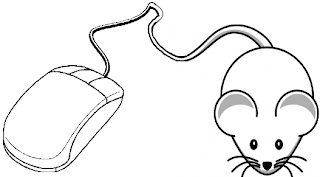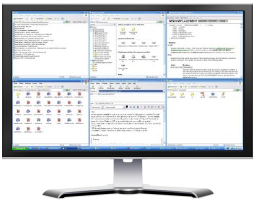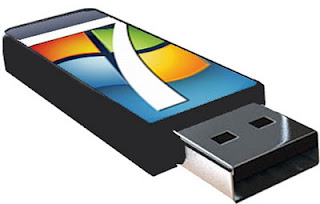'Happy new year' greetings from PCtionary , Ok since it's 2012 i would like to show one of my favorite tutorials i'd learn when i was on college, whenever im in hurry installing windows OS (Operating System) i always forgot to carry all my CD/DVD installer, But for some reason's every time i grope my pocket i feel a USB drive.
 That's why i had an idea "what if i install OS using pendrive?"
That's why i had an idea "what if i install OS using pendrive?"
Good Idea. So in this tutorial ill show this useful trick.
WHAT YOU NEED:
1. POWER ISO (one of my favorite)
2. USB DRIVE recommended 8gb
Step1: Create Bootable USB Drive:
 That's why i had an idea "what if i install OS using pendrive?"
That's why i had an idea "what if i install OS using pendrive?" Good Idea. So in this tutorial ill show this useful trick.
WHAT YOU NEED:
1. POWER ISO (one of my favorite)
2. USB DRIVE recommended 8gb
Step1: Create Bootable USB Drive:
- Start PowerISO (v4.8 or newer version, download here).
- Insert your USB drive/Pendrive
- Choose the menu "Tools > Create Bootable USB Drive". The "Create Bootable USB Drive" dialog will popup. If you are using Windows Vista or Windows 7 operating system, you need confirm the UAC dialog to continue.
- In "Create Bootable USB Drive" dialog, click "..." button to open the iso file of Windows 7.
- Select the correct USB drive from the "Destination USB Drive" list if multiple USB drives are connected to the computer.
- Choose the proper writing method. "USB-HDD" is recommended.
- Click "Start" button to start creating windows 7 bootable USB drive.
If no errors occured in the above process, you should now be all set to setup Windows 7 from USB drive!
Step 2: Configuring the BIOS:
You should now reboot and go into the BIOS configuration to boot from USB. Instructions for doing so wildly from system to system, but generally entail the following:
- Reboot the system.
- While booting (before Windows starts loading), get into the BIOS configuration screen by hitting something like F1, F2, Delete or Escape. Hotkey instructions are generally provided on the screen.
- Go to the section that contains your boot devices.
- With your USB drive plugged in, the USB drive should be listed. If it isn’t, your system might not support booting from USB. Assuming that it is supported (as is the case with virtually all modern hardware), promote your USB drive to the primary boot device.
- Exit from the BIOS configuration, saving all changes.
If you’re completely new to BIOS configuration, Click here for more info. Be aware though, that you can seriously screw up your system by providing incorrect settings!
Step 3: Booting and setup windows 7 from USB drive:
Assuming that you properly configured your BIOS and your USB drive supports booting, Windows 7 setup should now load. Depending on the speed of your USB drive, this may take a while.
NOTE: If it isn’t working, then double-check the following before making a scene:
- Is your BIOS properly configured for booting from the USB device? (Is the USB device listed and does it have top priority?)
- Have you correctly prepared the USB drive in step one? (Restart the procedure.)
- Does your USB drive properly support being booted from? (Try another one!)
Ok! hope you've follow above intsruction and done that correctly..

















